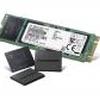With a current day and age SSD, chances are quite good it's using 64-layer NAND. 96-layer is available as well and 128-layer in the works. However Samsung is already working on 160 layers, and more.
Samsung Electronics is developing 7th generation V-NAND flash memory with 160 layer or higher, reports Korean ETNews. The number of layers is the most within the industry. There will be more uses to NAND flash memory, which stores data, as the number of layers increases which then leads to greater capacity. Chinese semiconductor company called YMTC recently announced its plan to mass-produce 128-layer NAND flash memory by the end of this year, Samsung Electronics is already preparing for the next generation. According to the industry, it is understood that Samsung Electronics is developing 7th generation V-NAND flash memory with 160 layer or higher.
It is heard that Samsung Electronics has already made a significant process as it has accelerated the development process. Samsung Electronics is looking into applying “double-stack” technology to the 7th generation V-NAND flash memory. This technology creates holes in two separate times so that current can go through circuits. Samsung Electronics has been using “single-stack” technology that creates holes all at once. It seems that Samsung Electronics is considering the “double-stack” technology due to an increase in the number of layers.
160-layer or higher NAND flash memory will be the first within the industry. The highest number of layers of currently commercialized NAND flash memories is 128. No company has yet to announce that it has succeeded in developing 160-layer or higher NAND flash memory. Samsung Electronics and SK Hynix announced last year that they developed 128-layer NAND flash memory. YMTC recently succeeded in developing 128-layer memory as well and announced its plan to start mass-producing the memory by the end of this year.
Samsung Working on 160-layer or even higher ultra-high-stacked NAND


